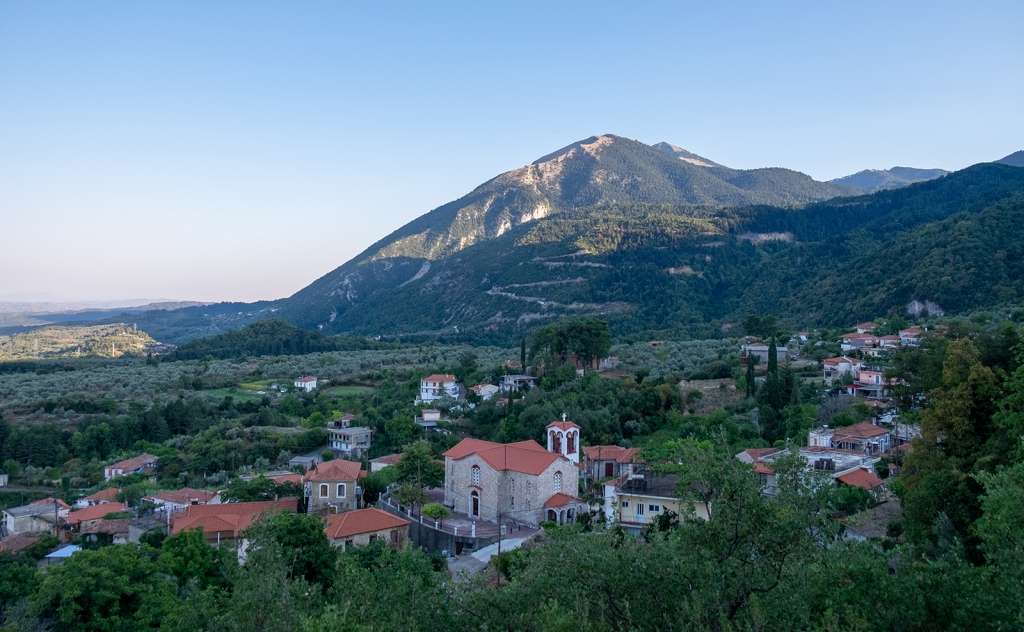





The mountain village of Alevrou is built on the northeast side of Taygetos at an altitude of 602 meters, and it is 23 kilometres north of Sparta. Alevrou is neighbouring the villages of Kastori, Perivolia and Georgitsi.
Before 1463, Alevrou was called Paleochora and was located about 4 km northeast of the present village. The establishment of the settlement is lost in the depths of time. During Byzantine times, Paleochora was connected by road to the access road of ancient Pellani-Velemina, (which Pausanias mentions in "Lakonika"). There were watermills that each operated with the water that ran from the previous one in the area. The main one of the mills belonged to a woman who came from Paleochora and always had flour on her clothes, from top to bottom. The inhabitants, therefore, addressed her as "Flour woman". So, over time, the village changed its name to Alevrou (which means flour -woman).
There is historical evidence that during the Revolution of 1821, the village participated in the Struggle. Led by Captain Baliotis, the men of the village had joined the captaincy (fight group) of Georgitsios, taking part in the battle of Valtetsi, Doliana, Dervenakia and the siege of Tripolis. The fighter, Antonios Anagnostopoulos, also came from the village. After his release, King Othon, during his tour of the Peloponnese in October 1833, also visited Alevriani (as it was written in the tour diary). The expansion and denser construction of Alevrou began after 1870.
Alevrou is surrounded by picturesque churches scattered around the village: Agios Georgios is located in the main square and belongs to the simple Byzantine style. It was built between 1887-1897 on the site of the old, small church. Panaitsa is a beautiful church in the middle of the village, dedicated to the Nativity of the Virgin, and celebrates on September 8th. Stavroulis is located at Lagaditsa, and Agioi Taxiarches (the village's cemetery) is located at "Alonia", at the eastern end of Alevrou. Finally, St. Barbara is a picturesque church through which gargling water passes. The water passes under the Holy Table and comes out very clear outside at the fountain of the Sanctuary. It celebrates on November 8th.